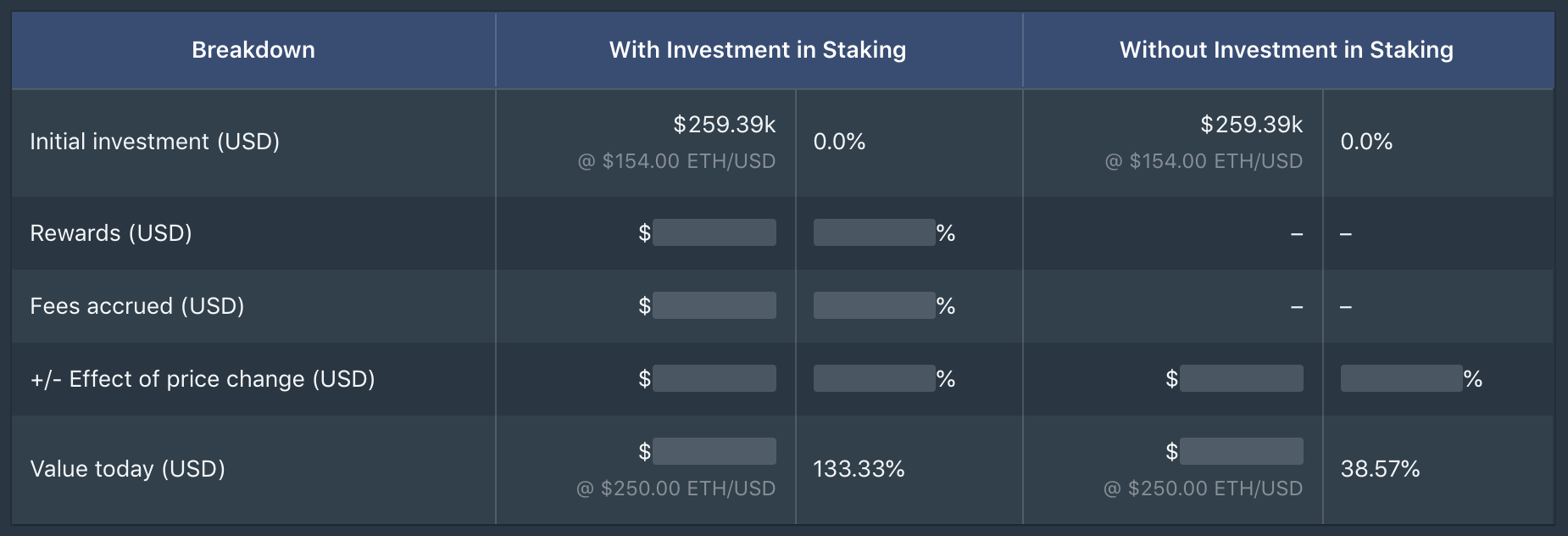TLDR; When investors evaluate the risks associated with Staking Yields, they are usually considering smart contract security risk, economic risk and perhaps regulatory/compliance risk. In this post, we make the case that there's also an opportunity cost risk behind staking that an investor often overlooks. This is the risk of participating in a staking network as a validator as opposed to simply staying put on your initial cryptoassets. Our thesis is that this facet of risk will come under increased scrutiny as more Proof-of-Stake (PoS) networks come online.
Why is Staking exciting?
THIS POST IS NOT FINANCIAL/INVESTMENT/TAX ADVICE.
Proof-of-Stake (PoS) networks rely on a set of validators who are incentivized to secure the network by locking in a stake as a collateral, running a node, processing transactions, producing blocks and reaching consensus. Validators are rewarded "staking rewards" for their contributions or penalized "slashed" for malicious behaviour in the network. PoS consensus mechanisms are a great step forward and a replacement for the expensive mining process in Proof-of-Work (PoW) systems.
From an investment angle, staking is a uniquely differentiating feature offering. Thus far, cryptocurrency investing has been limited to capital appreciation. Now investors have another venue that mimicks fixed-income strategies in traditional finance. In our previous blog post, we outlined why Staking Yields are attractive to mainstream investors.
Though staking yields appear to be approachable, the design space of PoS networks is infinitely richer. An investor will have to consider various forms of risks associated with PoS rewards. In the initial days before a network has adoption, most of the staking rewards come from inflation built into the protocol. The protocol mints new tokens to reward active validators and in the process diluting inactive token holders.
Overtime, the rewards to a validator will scale back from inflation-based rewards to transaction fee-based rewards.
The risks associated with PoS rewards
It's true that there's no counter-party risk with most PoS networks. The protocol has an in-built inflation schedule as part of its core design. But staking rewards cannot be considered in a vacuum. An investor will have to consider:
Smart contract risk – ensure that the smart contracts having the custody of your assets have the right kind of audits, and if upgradable has on-going audits. Shout out to DeFi score for putting together a nice framework for lending protocols. We expect this framework can be expanded to staking networks in the future.
Economic risk – these protocols are highly complex, inter-dependent systems with a lot of in-built assumptions. Many of them have features like dynamic inflation schedules to incentivize participation. Payout schedules may also affect liquidity and free-float on the markets leading to price action. The only way to understand edge-cases and extreme conditions is via simulation tools like cadCAD.
Operator/validator risk – relying on a validator includes a lot of factors to consider: slashing history, bonding/unbonding periods, payout schedule. Though some of these features might be set on the protocol level, many professional validators are starting to offer these features as added differentiating benefits.
Opportunity cost risk – an investor will have to make a choice between 1) sitting on their cryptoassets, not participate in staking and getting diluted versus 2) wait for price appreciation. We have previously described that staking is a driver for token price appreciation, so there's a clear argument for the latter case.
Covalent has built the "What-If ROI tool" for Staking networks
Covalent is addressing the "opportunity cost risk" for investors in staking networks head-on.
What-If tools are popular with spreadsheet users to explore all possible results by using several different sets of inputs. We've applied this tool to the staking networks to understand an investor's returns.
Besides an itemized profit-and-loss (PnL) statement and a breakdown of your returns into inflation-based rewards and transaction fees-based rewards, we are also calculating a hypothetical scenario to understand the contribution from price action.

What-If calculation to understand ROI due to price action.
Accurate PnL (profit-and-loss), record-keeping and analytics around the usage of a network, the entry/closing prices, staking reward distributions and slashing conditions with software is crucial. We are building SafeKeep to help investors with this data availability gap, starting with ETH 2.0.